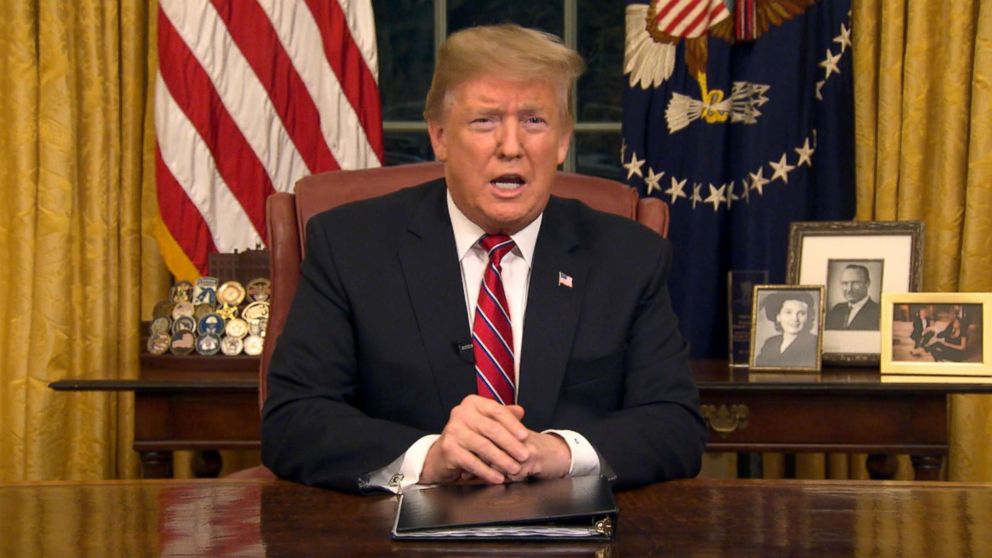[ad_1]
President Donald Trump used his first Oval Office address to the nation to urge Congress to address what he called a “growing humanitarian and security crisis” at the southern border.
Interested in Donald Trump?
Add Donald Trump as an interest to stay up to date on the latest Donald Trump news, video, and analysis from ABC News.
“This is a humanitarian crisis, a crisis of the heart, a crisis of the soul,” he said.
He implored Congress to think of the families of Americans murdered by illegal aliens, without quantifying the figure.
“I have met with dozens of families whose loved ones were stolen by illegal immigrants. I have held the hands of the mothers and embraced the grief stricken fathers,” he said. “I will never forget the pain in their eyes, the tremble in their voices, and the sadness gripping their souls. How much more American blood must we shed before congress does it’s job?”
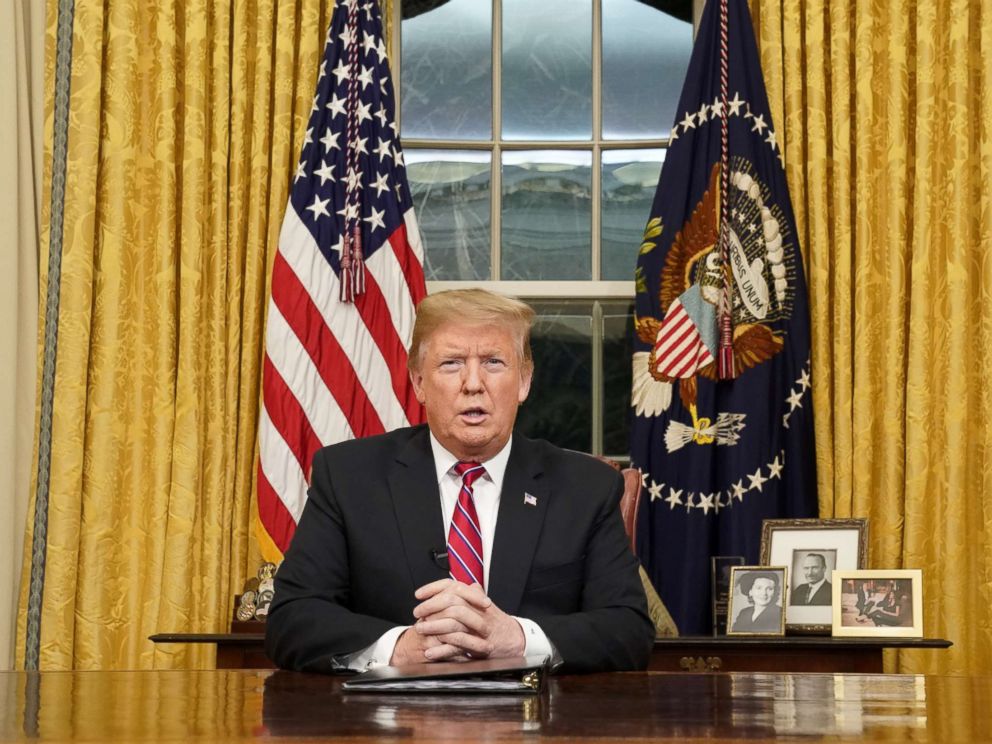 Carlos Barria/Reuters
Carlos Barria/ReutersTrump urged Congress to take up his administration’s request for $5.7 billion in border wall funding, along with millions for additional detention beds and new screening technology.
“These are the resources they have requested to properly perform their mission and keep America safe. In fact, safer than ever before,” he said of border agents and law enforcement.
Trump claimed the border wall would “quickly pay for itself,” and that it would be paid for indirectly through the new trade deal with Canada and Mexico, an assertion disputed by economists.
The president then tweeted video of his address.
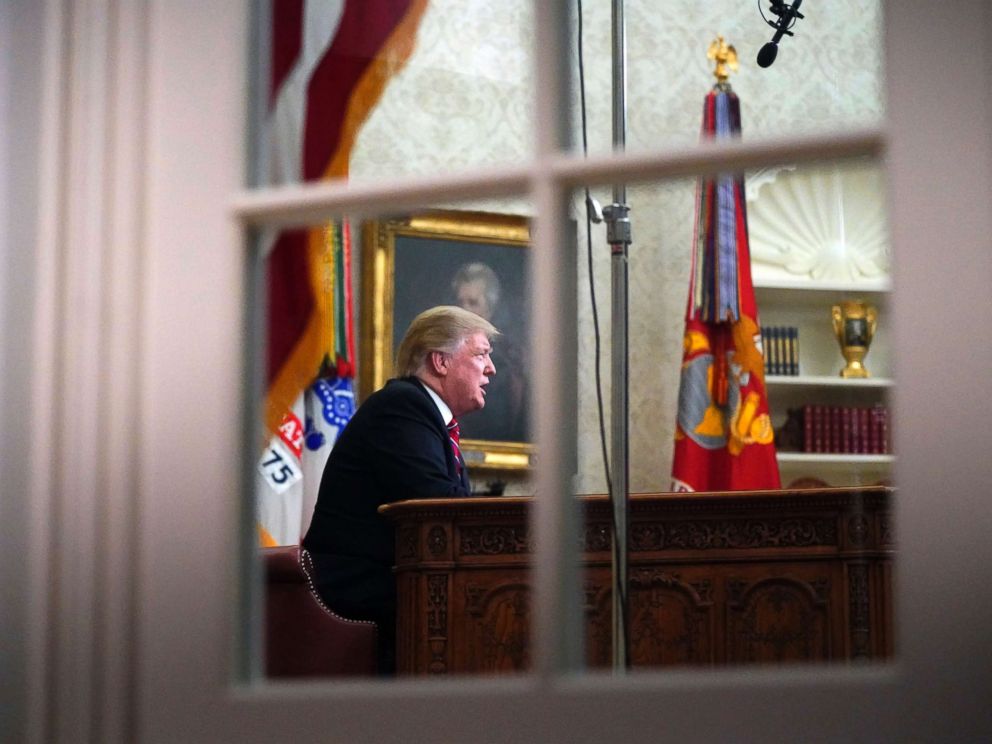 Carolyn Kaster/AP
Carolyn Kaster/APThe president’s address, aimed at building public support for his signature campaign issue — his proposed border wall — comes on the 18th day of a partial government shutdown over his demand that Democrats agree to billions of dollars to pay for the wall. He was followed by a televised joint response from Democratic leaders, House Speaker Nancy Pelosi and Senate Minority Leader Chuck Schumer, who adamantly oppose paying for a wall and are demanding Trump agree to re-open the government.
In a short response to Trump’s remarks Tuesday night, House Speaker Nancy Pelosi, D-California, accused Trump of holding government hostage “over his obsession with forcing American taxpayers to waste billions of dollars on an expensive and ineffective wall — a wall he always promised Mexico would pay for.”
Senate Minority Leader Chuck Schumer, D-New York, suggested Trump used the Oval Office to “manufacture a crisis,” and called on him to sign legislation to re-open government while negotiating border security with Congress.
“We can re-open the government and continue to work through disagreements about policy,” he said.
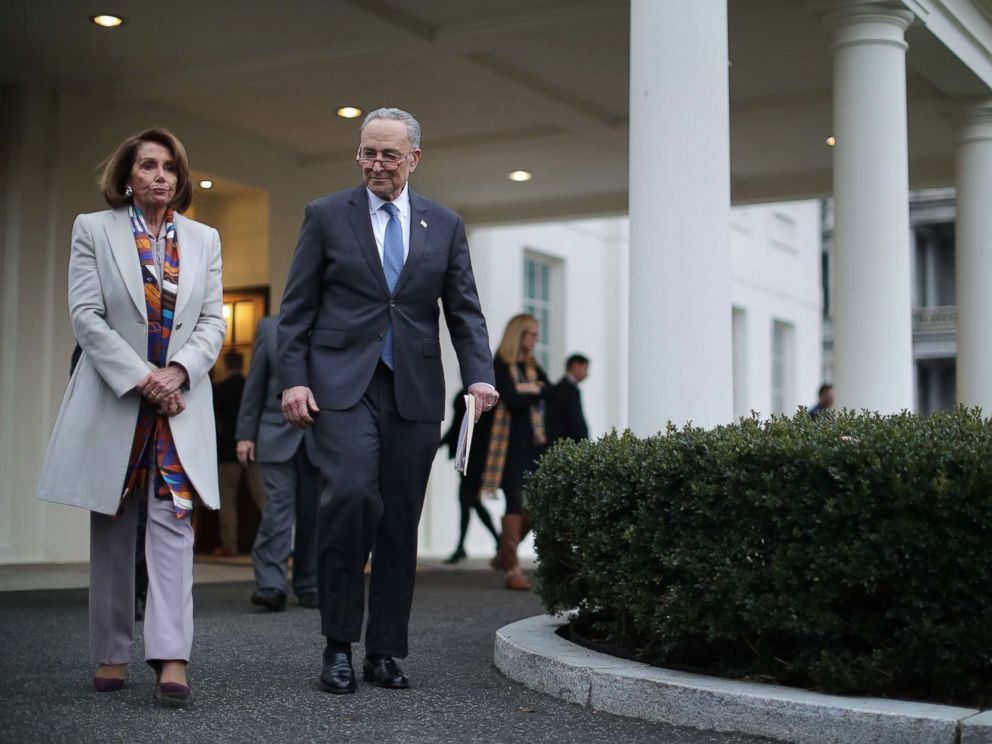 Chip Somodevilla/Getty Images, FILE
Chip Somodevilla/Getty Images, FILETrump has said publicly in recent days that he is weighing the possibility of formally declaring a “national emergency” over border security — and said he believes he has the authority to do so — in an effort to circumvent Congress and use money allocated to the military — or from elsewhere in the government — to fund the wall. As of Tuesday morning, Vice President Mike Pence, in an interview on ABC’s “Good Morning America,” said the president had yet to make a decision, saying, “It’s something that he’s looking at.”
Hours before the president was set to make the address, a senior White House official said the president continued to make revisions to the speech and had not made a final decision on whether to declare a national emergency.
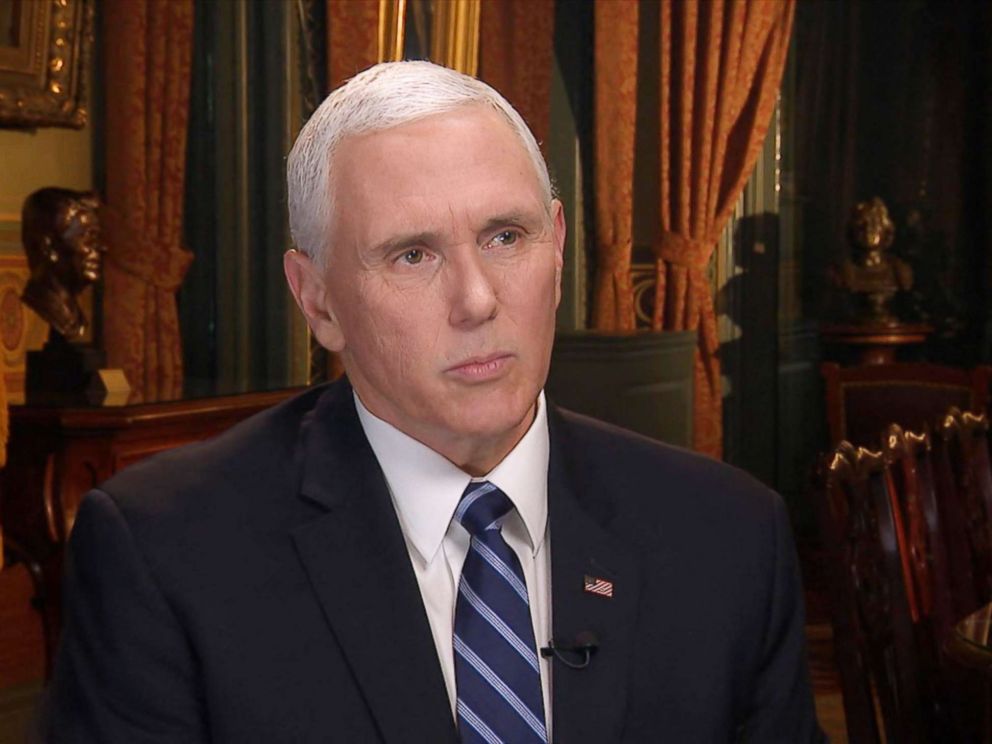 ABC News
ABC NewsPence traveled to Capitol Hill Tuesday afternoon to rally congressional Republicans ahead of the president’s speech.
Trump is expected to head to Capitol Hill on Wednesday to meet with Senate Republicans.
Later Wednesday, key Congressional leaders are expected to return to the White House to meet face-to-face with the president for the third time in the ongoing shutdown standoff. The leaders last sat down on Friday.
As part of the president’s public relations offensive, the White House said, he plans to go to the southern border on Thursday to visit with those on the “frontlines” as he continues to make the argument that a wall is essential to “national security,” during which he’s made numerous false claims and exaggerations.
“We have an absolute crisis, and of criminals and gang members coming through. It is national security. It’s a national emergency,” President Trump said on Sunday, as he spoke about his deliberations.
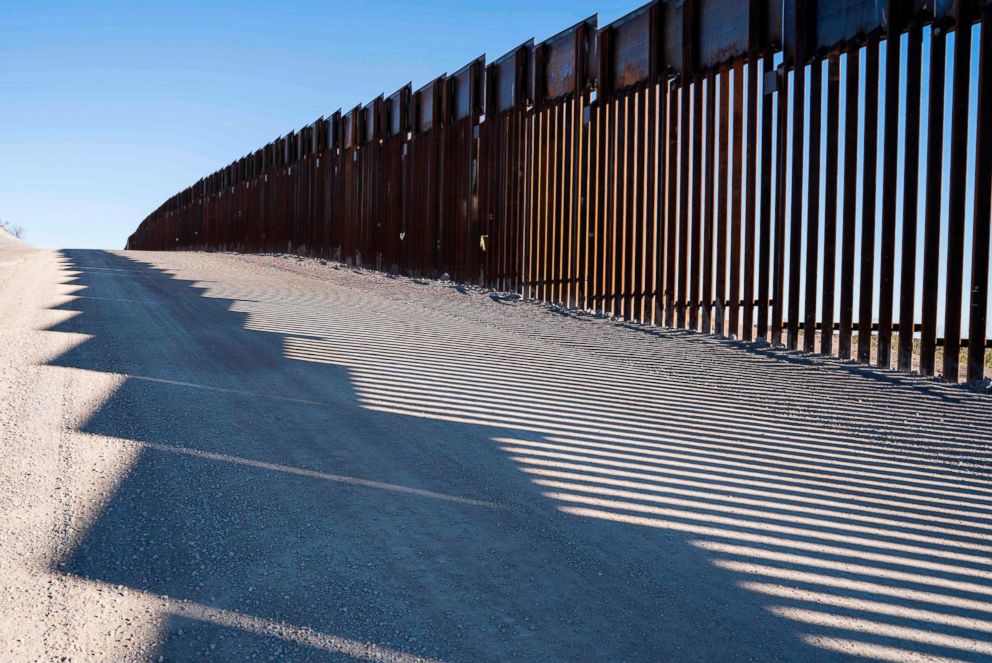 Paul Ratje/AFP/Getty Images
Paul Ratje/AFP/Getty ImagesThe White House put out a press release Tuesday afternoon citing the president’s call for a “wall” and repeating his talking points that the “southern border is overwhelmed with illegal immigration, gang violence, crime, drugs, and human trafficking.”
But in calling on Congress to “do more to address the border crisis” the White House used the term “physical barrier” — not wall — and Trump himself has said “steel slats” would be acceptable.
“We cannot keep our country safe without adequate funding for Border security, including a physical barrier and increased in funding for law enforcement,” the release said.
Although the president said he believes he has the authority to declare a national emergency, such an action would almost certainly be challenged in the courts.
The president told reporters Sunday that his decision on whether to declare an emergency would hinge on the status of an ongoing political impasse with Democrats over the president’s demand that a border wall be funded as part of an agreement to reopen shuttered portions of the federal government.
“I may declare a national emergency dependent on what’s going to happen over the next few days,” Trump said Sunday. “We have a meeting with Vice President Pence and a group will be going to a certain location that you know where that and they’ll be having another meeting.”
As the president seeks to make a renewed case of urgency surrounding the situation at the southern border, he is drawing from similar rhetoric that he has used for years in discussing the topic. As far back as the 2016 presidential campaign, the president spoke about the situation at the border as a crisis and a national emergency.
“As we speak, we are in the middle of an unprecedented crisis on our southern border,” he said Oct. 30, 2016, speech in Albuquerque, New Mexico.
“They tell us the border crisis is the worst it’s ever been. It’s a national emergency,” Trump said on Oct. 31, 2016, in Grand Rapids, Michigan.
Despite Trump campaigning for a wall and increased border security in the run-up to the midterm elections, Democrats gained control of the House and polls have shown most Americans oppose the president’s proposed wall.
ABC News’ Mary Bruce, Jon Karl and Trish Turner contributed to this report.
[ad_2]
Source link

